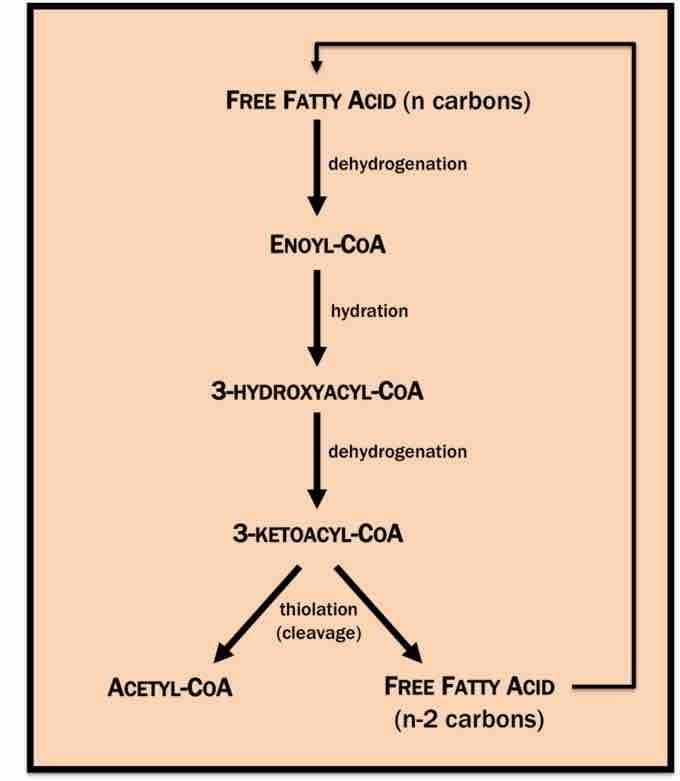Organic Acid Metabolism
A great many organisms generate organic acids (such as lactate) as a byproduct of fermentation. Some microbes are capable of utilizing such compounds as a sole source of energy.
The most commonly metabolized organic acids are the carboxylic acids, which are organic acids containing at least one carboxyl (-COOH) group. The general formula of a carboxylic acid is R-COOH, where R is a monovalent functional group. Many types of carboxylic acids can be metabolized by microbes, including:
- Fatty acids (carboxylic acids with long acyl tails)
- Amino acids (the building blocks of proteins)
- Straight-chained, saturated acids (e.g., formate, acetate, and palmitate)
FORMATE METABOLISM
Formate metabolism is important in methylotrophic organisms. It is vital in the catabolism of C1 compounds such as methanol (see the "Methylotrophy and Methanotrophy" atom for more information on C1 compound utilization). Methylotrophic microbes convert single-carbon compounds to formaldehyde, which is oxidized to formate by formaldehyde dehydrogenase. Degradation of formate is then catalyzed by formate dehydrogenase (FDH), which oxidizes formate to ultimately yield CO2. It permits the donation of electrons to a second substrate (such as NAD+) in the process. This is a critical late step in the hydrocarbon utilization pathway. The ability to metabolize formate is also critical in bacterial anaerobic metabolism, in which case formate is also oxidized by an FDH enzyme but the electrons are donated to cytochromes (proteins involved in electron transport).
FATTY ACID METABOLISM
Many bacteria are capable of utilizing fatty acids of various tail lengths as sole energy and carbon sources. This process requires the β-oxidation pathway, a cyclic process that catalyzes the sequential shortening of fatty acid acyl chains to the final product, acetyl-CoA. The step-by-step process occurs as follows:
- Fatty acid chains are converted to enoyl-CoA (catalyzed by acyl-CoA dehydrogenase).
- Enoyl-CoA is converted to 3-hydroxyacyl-CoA (catalyzed by enoyl-CoA hydratase).
- 3-hydroxyacyl-CoA is converted to 3-ketoacyl-CoA (catalyzed by 3-hydroxyacyl-CoA dehydrogenase).
- 3-ketoacyl-CoA is thiolated (by 3-ketoacyl-CoA thiolase) to yield one molecule of acetyl-CoA and a derivative of the original input fatty acid that is now shorter by two carbons.
The fatty acid chain that is left over after the thiolation step can then reenter the β-oxidation pathway, which can cycle until the fatty acid has been completely reduced to acetyl-CoA. Acertyl-CoA is the entry molecule for the TCA cycle. The TCA cycle is the process used by all aerobic organisms to generate energy .

β-oxidation of fatty acids
Free fatty acids are broken down to acetyl-CoA by dedicated enzymes in the β-oxidation pathway.